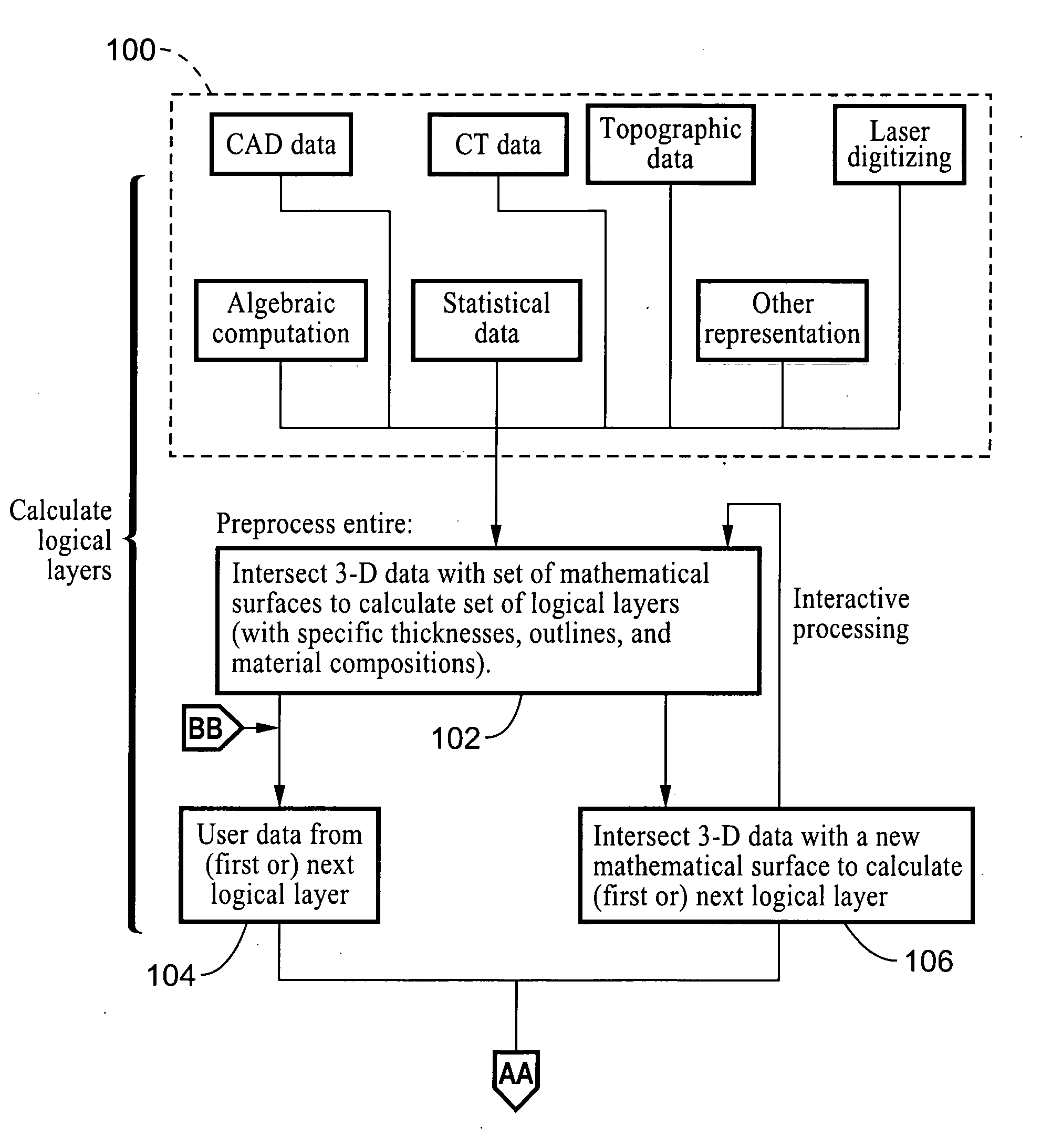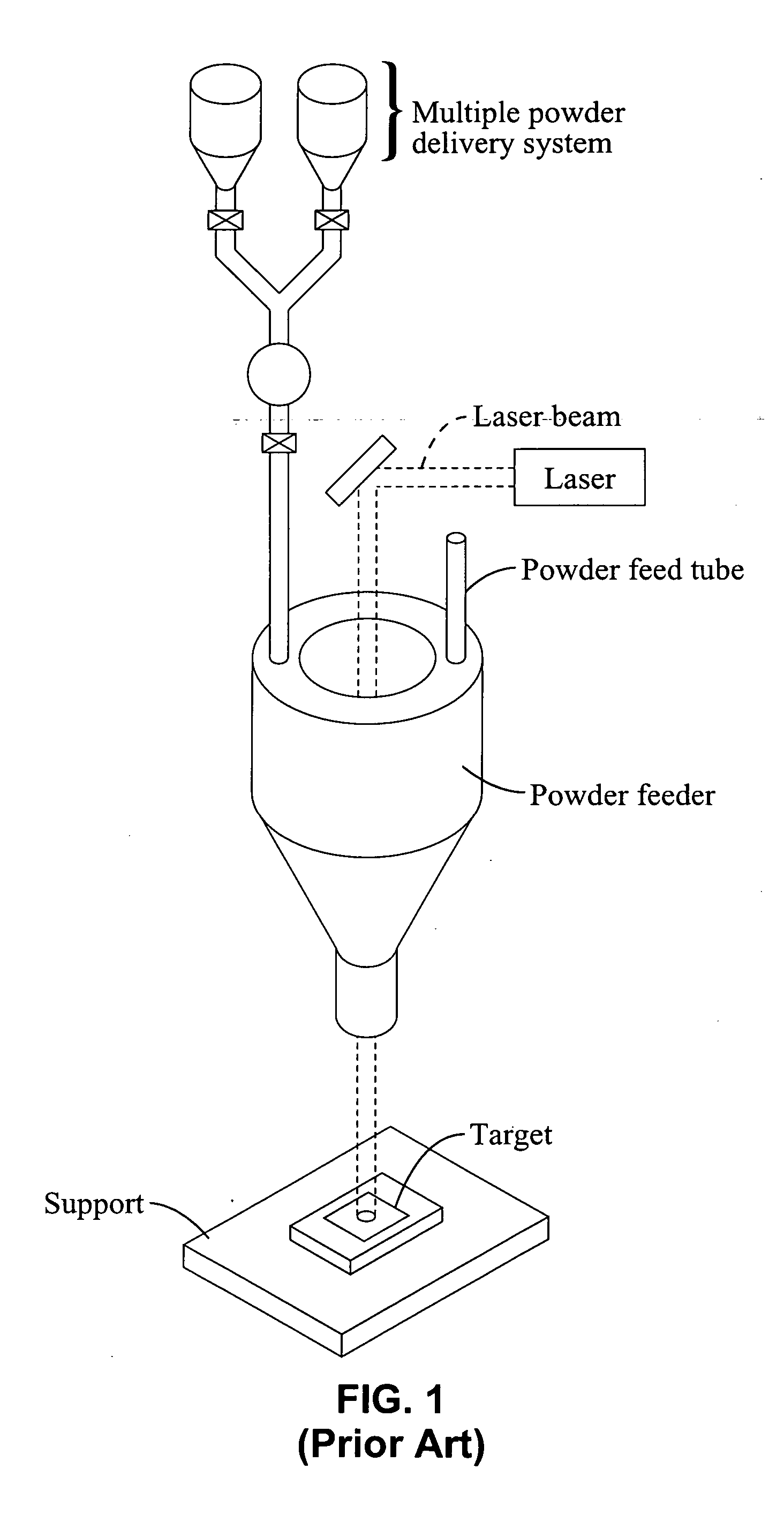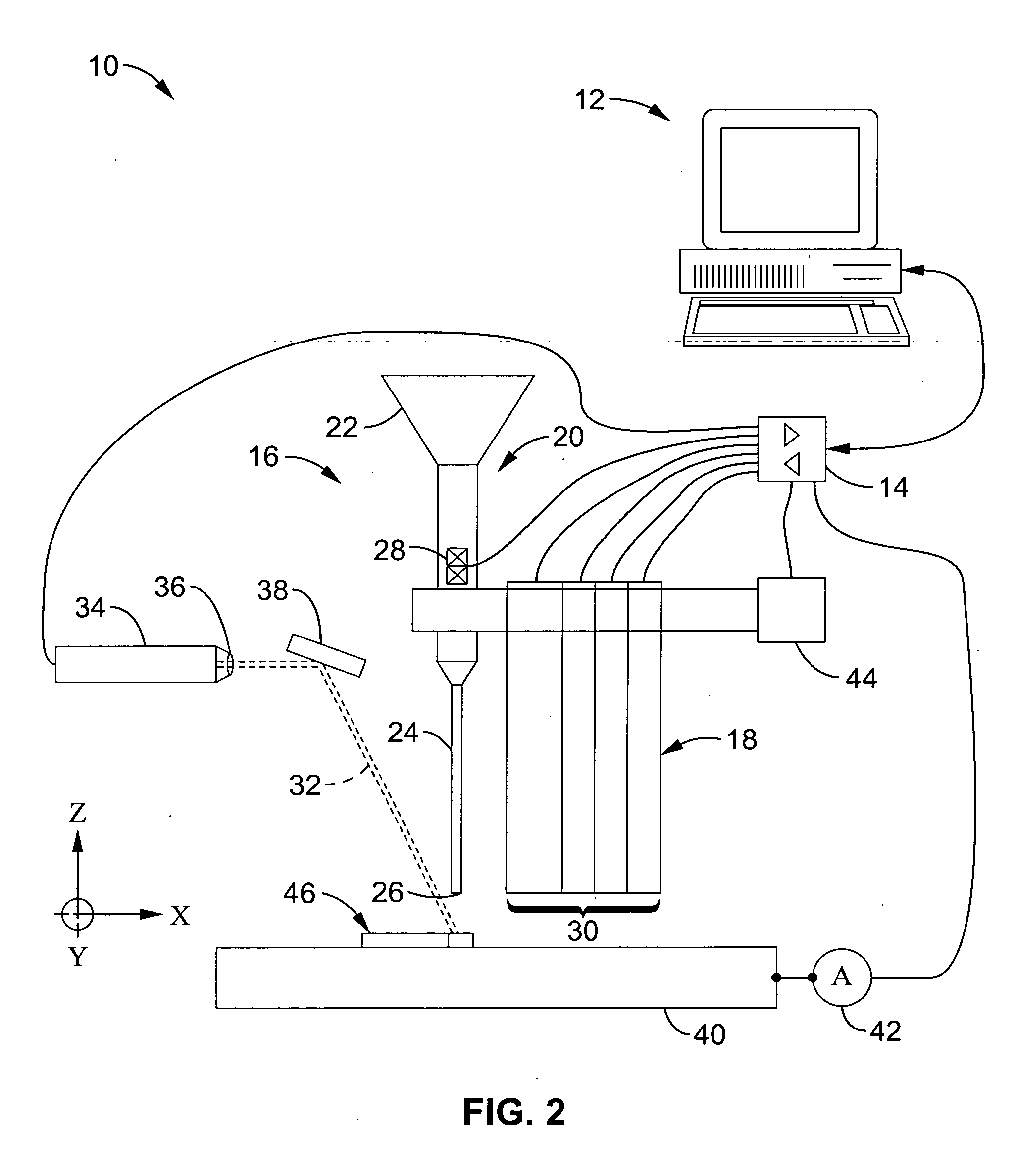Direct write and freeform fabrication apparatus and method
a technology of freeform fabrication and writing apparatus, which is applied in the direction of additive manufacturing process, additive manufacturing with liquids, instruments, etc., can solve the problems of inapplicability of inkjet technology, many other techniques are limited to the production of parts, and most prior-art layer manufacturing techniques are only applicable to parts. , to achieve the effect of improving the accuracy of parts
- Summary
- Abstract
- Description
- Claims
- Application Information
AI Technical Summary
Benefits of technology
Problems solved by technology
Method used
Image
Examples
Embodiment Construction
[0059] Referring more specifically to the drawings, for illustrative purposes the present invention is embodied in the apparatus generally shown in FIG. 2 through FIG. 3B. It will be appreciated that the apparatus may vary as to configuration and as to details of the parts, and that the method may vary as to the specific steps and sequence, without departing from the basic concepts as disclosed herein.
[0060]FIG. 2 illustrates by way of example one embodiment 10 of the direct-writing and freeform 3-D build up apparatus. This apparatus is equipped with a computer 12 for creating a drawing or image (i.e. CAD system) of a device or an object and, through a hardware controller 14 (data acquisition and control head) that monitors and controls the operation of other components of apparatus 10. Hardware controller 14 preferably comprises necessary inputs and outputs for monitoring the process and outputting proper control signals, such as for example comprising a signal generator, amplifie...
PUM
| Property | Measurement | Unit |
|---|---|---|
| droplet sizes | aaaaa | aaaaa |
| droplet sizes | aaaaa | aaaaa |
| droplet sizes | aaaaa | aaaaa |
Abstract
Description
Claims
Application Information
 Login to View More
Login to View More - R&D
- Intellectual Property
- Life Sciences
- Materials
- Tech Scout
- Unparalleled Data Quality
- Higher Quality Content
- 60% Fewer Hallucinations
Browse by: Latest US Patents, China's latest patents, Technical Efficacy Thesaurus, Application Domain, Technology Topic, Popular Technical Reports.
© 2025 PatSnap. All rights reserved.Legal|Privacy policy|Modern Slavery Act Transparency Statement|Sitemap|About US| Contact US: help@patsnap.com



